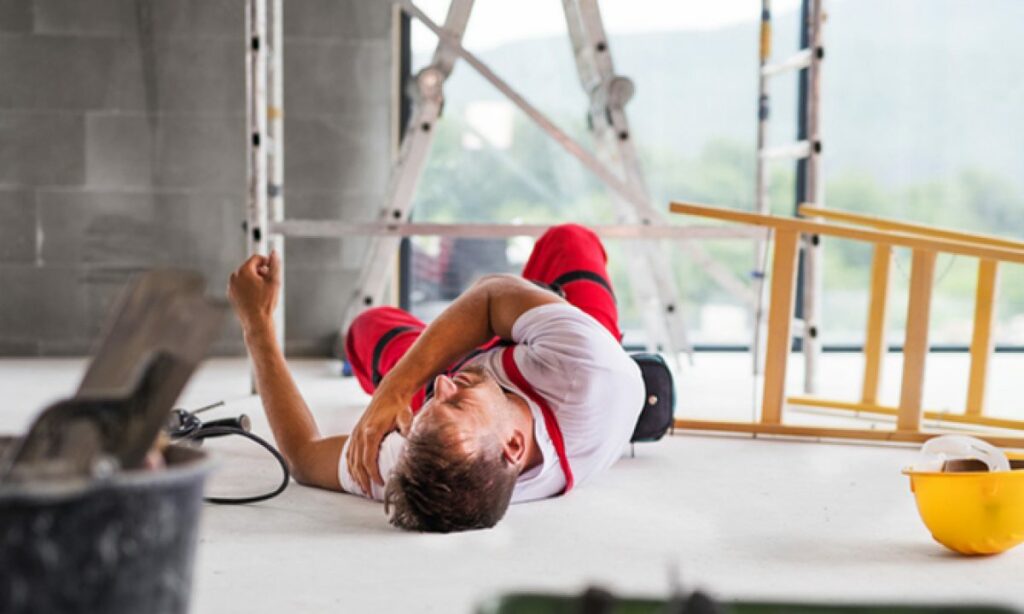Slip and fall injuries are among the most common workplace accidents, often resulting in significant pain, medical expenses, and lost wages. Knowing how to file a workers’ compensation claim for a slip and fall injury is crucial to receiving the benefits you are entitled to. This guide will walk you through the process, ensuring you understand your rights and the steps involved.
Understanding Workers’ Compensation
Workers’ compensation is a type of insurance that provides benefits to employees who suffer work-related injuries or illnesses. These benefits typically cover medical expenses, rehabilitation costs, and a portion of lost wages. The goal is to support injured workers without the need for lengthy and expensive litigation.
Common Causes of Slip and Fall Injuries
Slip and fall injuries can occur in any workplace, but they are particularly common in environments where floors can become wet, oily, or uneven. Common causes include:
- Wet or Slippery Floors: Spills, cleaning, or inclement weather can lead to wet floors.
- Loose or Uneven Flooring: Damaged or uneven flooring can create tripping hazards.
- Obstructions: Objects left in walkways can cause employees to trip and fall.
- Poor Lighting: Inadequate lighting can make it difficult to see hazards.
- Stairs and Ladders: Falls from stairs and ladders are common, especially if they are not properly maintained.
Steps to Take After a Slip and Fall Injury
Taking the right steps immediately after a slip and fall injury is crucial for your health and for strengthening your workers’ compensation claim. Here’s what you should do:
1. Seek Medical Attention
Your health is the top priority. Seek medical attention immediately, even if the injury seems minor. A medical professional can assess your condition and provide necessary treatment. Ensure that you follow the prescribed treatment plan and keep detailed records of all medical visits and treatments.
2. Report the Injury to Your Employer
Notify your employer about the slip and fall injury as soon as possible. This notification should be in writing and include details about how the injury occurred. Timely reporting is essential, as delays can jeopardize your claim.
3. Document the Incident
Gather as much evidence as possible to support your claim. This can include:
- Photographs: Take pictures of the accident scene, focusing on the hazard that caused your fall.
- Witness Statements: Collect contact information and statements from any witnesses.
- Accident Reports: Fill out any required accident reports provided by your employer.
4. Keep Detailed Records
Maintain thorough documentation of your injury, medical treatments, and any communication with your employer and insurance company. This documentation will be invaluable when building your case.
Filing a Workers’ Compensation Claim
Filing a workers’ compensation claim involves several steps. Here’s a detailed guide to help you navigate the process:
1. Obtain the Necessary Forms
Your employer or their insurance company should provide you with the required workers’ compensation claim forms. If they do not, you can usually obtain these forms from your state’s workers’ compensation board or website.
2. Complete the Claim Forms
Fill out the claim forms accurately and completely. Include detailed information about your slip and fall injury, medical treatment, and any lost wages. Be sure to follow all instructions and meet any deadlines.
3. Submit the Forms
Submit the completed forms to your employer and their insurance company. Keep copies of all documents for your records. It’s crucial to submit these forms within the time frame specified by your state’s workers’ compensation laws.
4. Follow Up
Stay in regular contact with your employer and the insurance company to check the status of your claim. Be proactive in providing any additional information or documentation they may request.
What to Do If Your Claim Is Denied
It’s not uncommon for workers’ compensation claims to be denied initially. If this happens, you have the right to appeal the decision. Here’s how to proceed:
1. Understand the Reason for Denial
Carefully review the denial letter to understand the reasons for the decision. Common reasons for denial include insufficient evidence, missed deadlines, or disputes over whether the injury is work-related.
2. Gather Additional Evidence
Collect any additional evidence that may support your claim. This can include more detailed medical records, additional witness statements, or expert testimony.
3. File an Appeal
Submit an appeal to your state’s workers’ compensation board. This usually involves filling out additional forms and providing a written explanation of why you believe the denial was incorrect. Be sure to adhere to any deadlines for filing an appeal.
4. Attend Hearings
You may be required to attend a hearing where you can present your case. An attorney specializing in workers’ compensation can represent you and help you navigate the process.
The Role of a Workers’ Compensation Lawyer
While you can file a workers’ compensation claim on your own, having a lawyer can significantly improve your chances of success. Here’s how a lawyer can help:
Expertise and Knowledge
A workers’ compensation lawyer has extensive knowledge of the laws and regulations governing workers’ compensation claims. They can ensure that your claim is handled correctly and that all deadlines are met.
Gathering Evidence
A lawyer can help gather and organize evidence to build a strong case. They can also work with medical professionals to obtain detailed reports that support your claim.
Negotiating with Insurance Companies
Insurance companies often aim to minimize payouts. A lawyer can negotiate on your behalf to ensure you receive fair compensation for your medical expenses and lost wages.
Representing You in Appeals
If your claim is denied, a lawyer can represent you during the appeals process, presenting your case effectively and advocating for your rights.
Tips for a Successful Workers’ Compensation Claim
To improve your chances of a successful workers’ compensation claim, follow these tips:
Be Prompt
Report your injury and file your claim as soon as possible. Delays can weaken your case and result in missed deadlines.
Be Thorough
Provide detailed information and documentation to support your claim. This includes medical records, accident reports, and witness statements.
Follow Medical Advice
Adhere to your doctor’s treatment plan and attend all scheduled appointments. This demonstrates the seriousness of your injury and your commitment to recovery.
Stay Informed
Educate yourself about your rights and the workers’ compensation process. Knowing what to expect can help you navigate the system more effectively.
Common Mistakes to Avoid
Avoiding common mistakes can help ensure your workers’ compensation claim is successful:
Failing to Report the Injury
Always report your injury to your employer, even if it seems minor. Unreported injuries can lead to claim denials.
Missing Deadlines
Adhere to all deadlines for reporting your injury and filing your claim. Missing deadlines can result in forfeiting your right to compensation.
Providing Incomplete Information
Provide complete and accurate information on all forms and documents. Incomplete information can lead to claim denials or delays.
Not Seeking Medical Attention
Always seek medical attention after a slip and fall injury. Failing to do so can weaken your claim and lead to disputes over the severity of your injury.
Summary
Filing a workers’ compensation claim for a slip and fall injury involves several crucial steps, from seeking medical attention and reporting the injury to gathering evidence and submitting claim forms. By understanding the process and following the tips outlined in this guide, you can improve your chances of receiving the benefits you deserve. If you encounter challenges or have questions, consider consulting a workers’ compensation lawyer to ensure your rights are protected and your claim is handled correctly.

